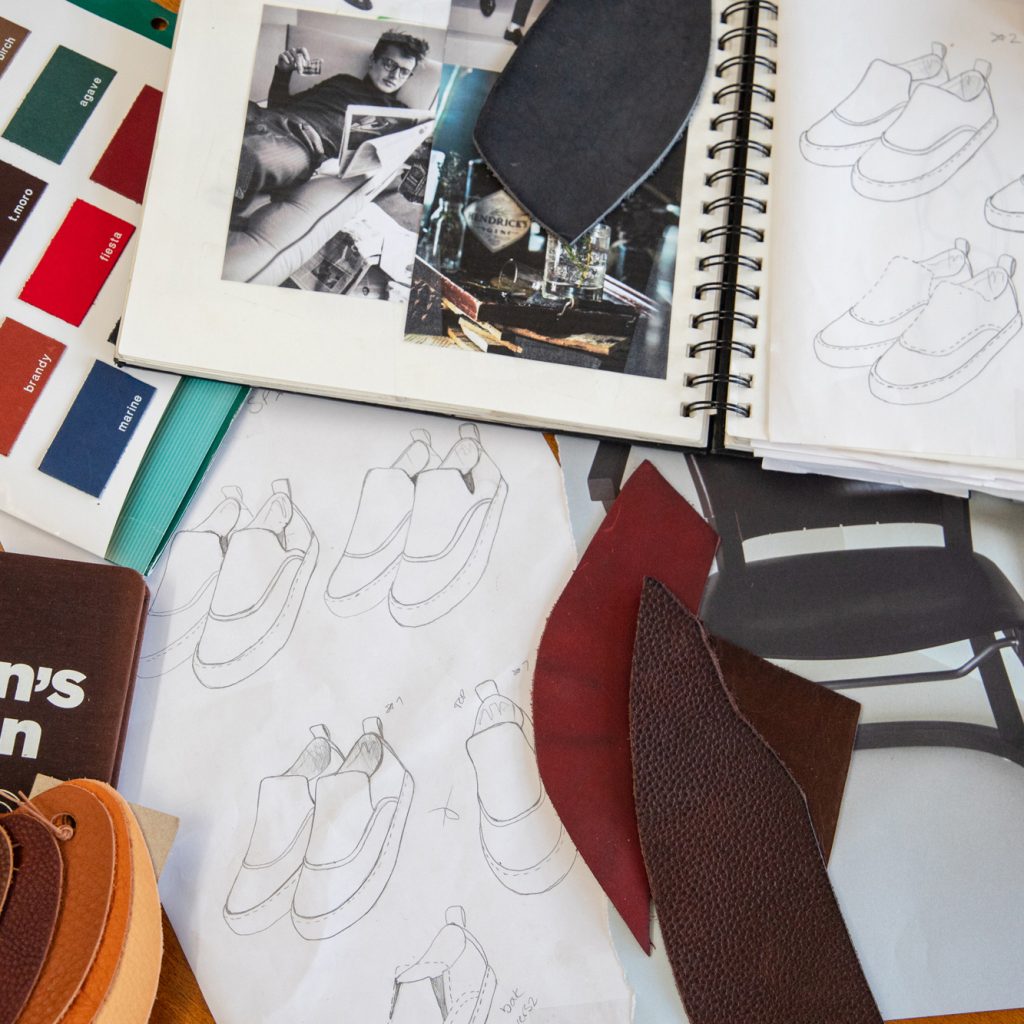STIG PERCY x BUNGALOW 5: Part I
A design journey
Some time ago we announced that we were to work a design collaboration with the Danish top interior blogger Allan Torp, aka Bungalow 5. After a few exciting and rewarding months working together, sketching, choosing materials, making prototypes and visiting the factory, we would now like to take you on that journey with us.
It has been a pleasure working together with Allan. He is a self-confessed shoe addict with a great eye for detail, design and colours. His sense of sought-after Scandinavian design and relaxed approach is something that goes well with the Stig Percy aesthetics and our values. The mission with our design collaboration was to design a sneaker together. A sneaker that would be casual yet stylish enough to be dressed up and comfortable to walk around in all day. Before we reveal the result we would like to take you on a journey and show you exactly how our sneakers are being made.
During the development, we brought Allan with us to visit our factory outside of Porto. We experienced the process of a shoe being made from scratch. Each pair of shoes are made by hand and they pass from one pair of hands to another through different stations. In this visual journey, we will take you through the different stages of handmade sneakers.
Step 1
The lining and the upper leather are placed on a cutting board. The pattern cutter then arranges the pattern pieces on a computer program to get the most out of one hide and leave as little waste as possible. The computer then projects the lines on the leather and laser cuts them out.
Step 2
The pieces that are cut out are then handed over to the next station. This station bevels the edges so that when the pieces are sewn together, the seems don’t end up thick and bulky.


Step 3
The pieces, with their now thinner edges, are reinforced where needed (on the heal and on the toe). Then they are assembled. The upper is sewn together first, followed by the lining. The two are then sewn together and checked for discrepancies.



Step 4
This station is different from regular shoemaking, where the upper is lasted onto a last at this stage. The sneaker upper is placed on a metal last and the heal is moulded in to shape with heat.

Step 5
The insole sock is stitched on to the upper before a last is being put in. Again, this is very specific to sneaker production, whereas on a classic type of shoe the insole would be built with the upper already on the last.

Step 6
The upper and insole now resemble a sock, in which you put a last. The upper is now shaped onto the last with pressure and heat. He also makes sure that there is no stretching and pulling and that both the upper and the lining are equal.

Step 7
Sneaker soles are first glued on and then stitched. At this station, the sole is glued and then put into an ‘oven’ that cements the glue.

Step 8
The soles are now stitched on and afterwards the cushioned insole with the logo is put. The shoe is now finished, but before it is packed into its box to be delivered it has to go through a quality control to ensure no mistakes have been made.


The Result
As you can tell, shoemaking is hands-on and demanding and requires a lot of precision. Our shoes are always crafted with love and we are very meticulous with details. The sneaker that you see in the photos being made was our second prototype. It required some alternations before we were satisfied and thus is not the final shoe. The Bungalow 5 sneaker will be available for both men and women and it will come in three colours. Stay tuned!
Sign up to our newsletter and be the first to know when the limited edition Bungalow 5 sneaker drops!

21/11/2018
Back

